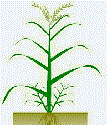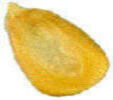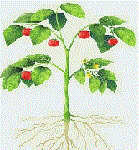Define the Angiosperm in plant kingdom
In the angiosperms or flowering plants the pollen grains and ovules are developed in specialised structures called flowers. In angiosperms, the seeds are enclosed in fruits.
The angiosperms are an exceptionally large group of plants occurring in wide range of habitats. They range in size from the smallest Wolffia to tall trees of Eucalyptus (over 100 metres). They provide us with food, fodder, fuel, medicines and several other commercially important products.
Classification of Angiosperms
They are divided into two classes :
The Dicotyledons
The Monocotyledons.
The dicotyledons are characterised by seeds having two cotyledons, reticulate venations in leaves, and tetramerous or pentamerous flowers (having four or five members in each floral whorls).
The monocotyledons on the other hand are characterised by single cotyledonous seeds, parallel venation in leaves, and trimerous flowers having three members in each floral whorls.
Reproduction and Fertilization
The male sex organ in a flower is the stamen. Each stamen consists of a slender filament with an anther at the tip. Within the anthers, the pollen mother cell divide by meiosis to produce microspores which matures into pollen grains.
The female sex organ in a flower is the pistil. Pistil consists of a swollen ovary at its base, a long slender style and stigma. Inside the ovary, ovules are present.
Generally each ovule has a megaspore mother cell that undergoes meiosis to form four haploid megaspores. Three of them degenerate and one divide to form the embryo sac. Each embryo-sac has a three-celled egg apparatus – one egg cell and two synergids, three antipodal cells and two polar nuclei.
Examples
banana, sugarcane, lilies, etc.
Name | Plant | Leaf | Seed |
|---|---|---|---|
| MONOCOT |
|
|
|
| DICOT |
|
|
|
The polar nuclei eventually fuse to produce a diploid secondary nucleus.
Pollen grain, after dispersal from the anthers, are carried by wind or various other agencies to the stigma of a pistil.
This is termed as pollination.
The pollen grains germinate on the stigma and the resulting pollen tubes grow through the tissues of stigma and style and reach the ovule.
The pollen tubes enter the embryo-sac where two male gametes are discharged.
One of the male gametes fuses with the egg cell (syngamy) to form a zygote.
The other male gamete fuses with the diploid secondary nucleus to produce the triploid primary endosperm nucleus (PEN).
Because of the occurrence of two fusions (syngamy) and triple fusion, this event is termed as double fertilisation, an event unique to angiosperms.
The zygote develops into an embryo (with one or two cotyledons) and the PEN develops into endosperm which provides nourishment to the developing embryo.
The synergids and antipodals degenerate after fertilisation. During these events the ovules develop into seeds and the ovaries develop into fruit.






